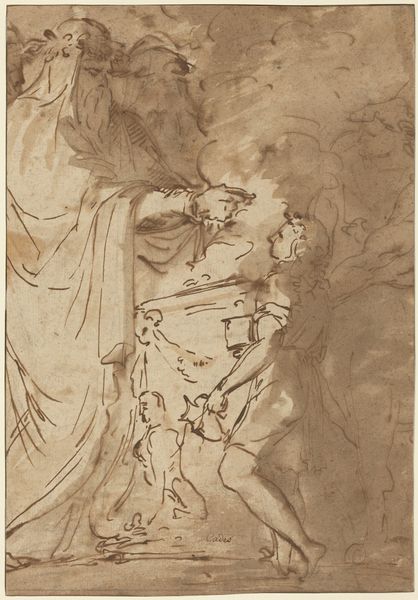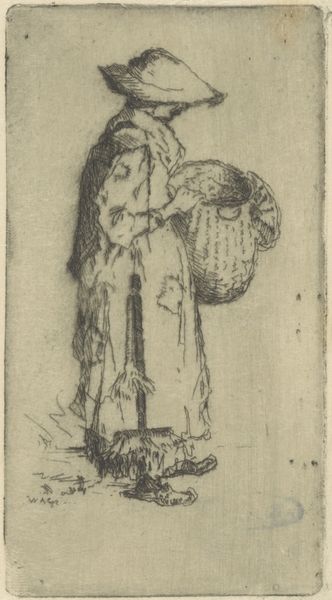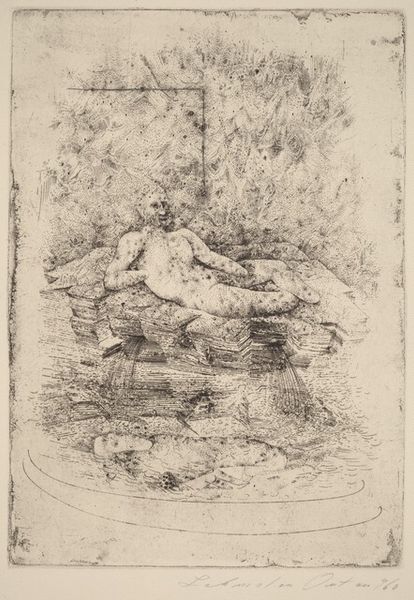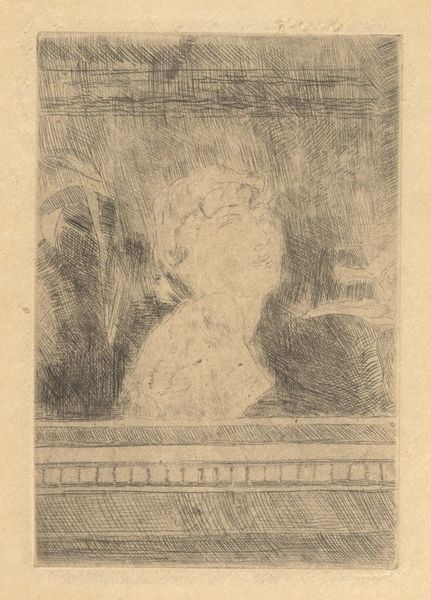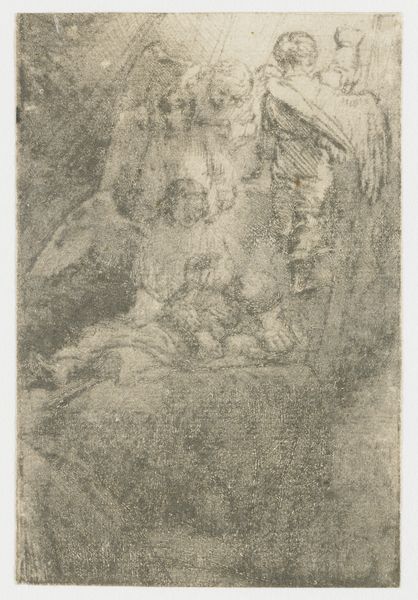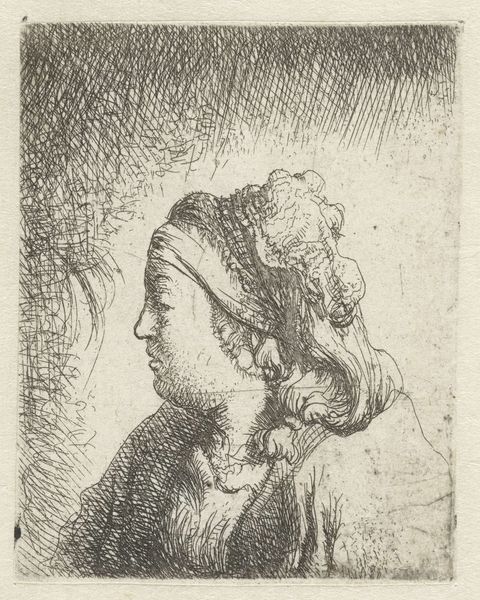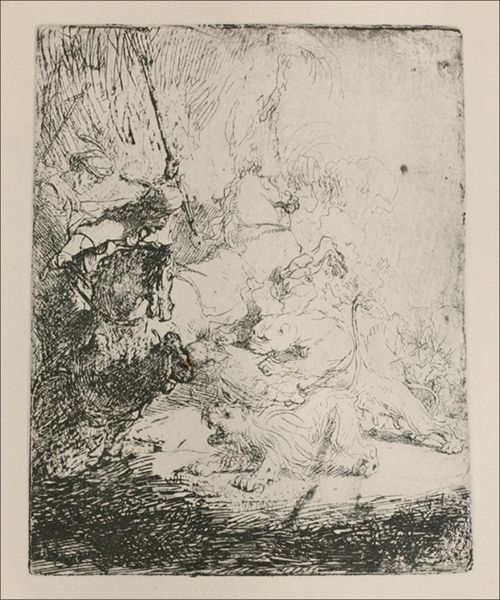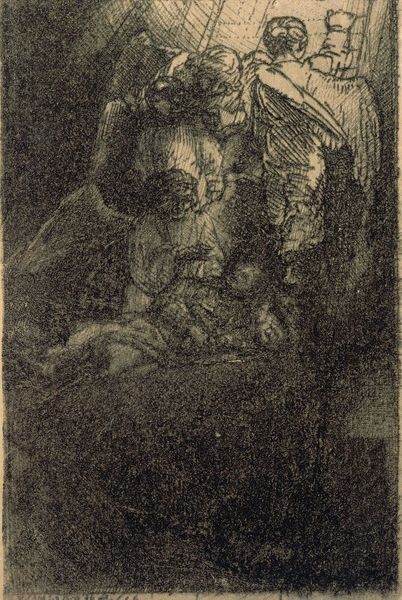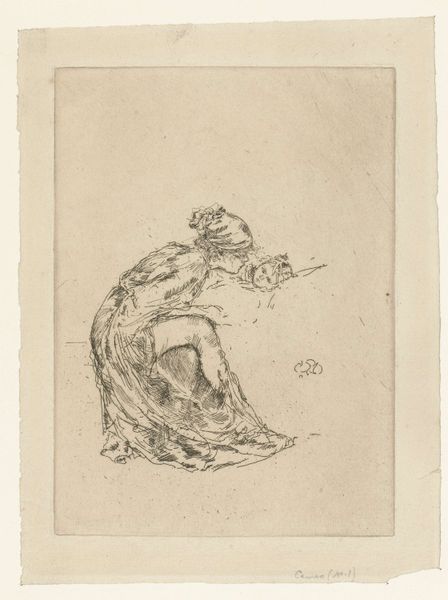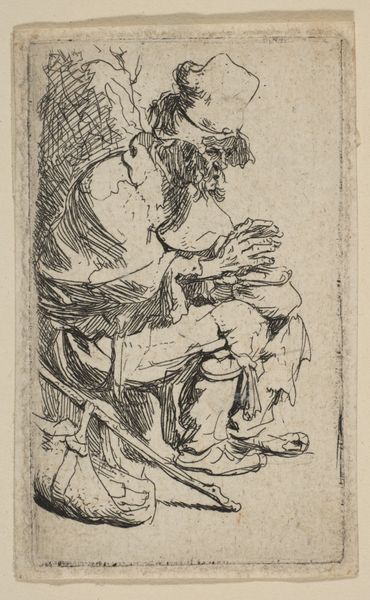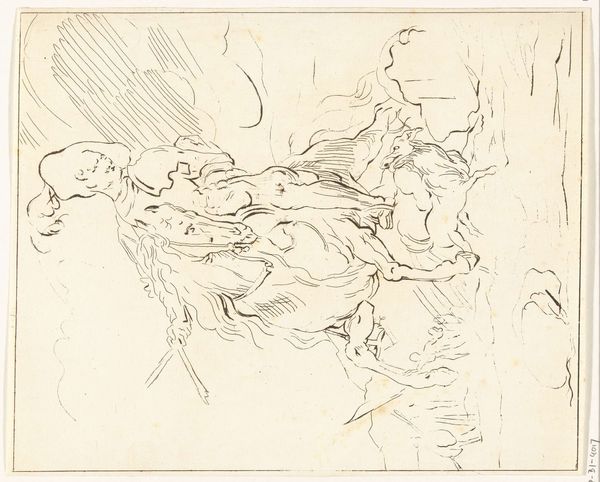
drawing, print, ink
#
portrait
#
drawing
#
ink drawing
# print
#
figuration
#
ink
#
group-portraits
Copyright: National Gallery of Art: CC0 1.0
Curator: Hans Meid's "Balcony Scene," created in 1910, offers us a glimpse into a different era, captured through ink on paper. Editor: My first impression? Faded elegance. The sepia tones and delicate lines make it seem like a half-remembered dream. Almost a little sad, actually. Curator: It’s rendered as an ink drawing. I mean look closer; you can see every little scratch. Every etching is a decision in the construction of his portraits. In its time, this etching would be both innovative, pushing printmaking as an art form while it was able to be broadly distributed. Editor: So it was originally thought of as an accessible format to deliver images. I notice the texture on their dresses seems carefully etched—do you see that hatching at the edges? Very labor intensive. The skill shows a dedication to the representation of cloth as a symbol of affluence. This kind of labor also would make art less democratic. It feels like there are contradictions embedded within its materiality. Curator: And within their very form. The scene’s soft, almost indistinct, making the subjects appear almost as if they are fading away. It suggests themes of impermanence, how even grandeur is at best fleeting. And you sense that feeling on the edges between representation and loss. Editor: Right, especially considering that the print medium itself is often seen as something reproductive, constantly churning out more copies. It’s a play of presence and absence. Look closely to see their big hairstyles as if to try and grasp even a touch of relevance by how much they possess to show off. This work almost questions the status and artifice. Curator: So, after a closer look at "Balcony Scene," I'm struck by the poignancy that arises when you embrace fleeting moments and decay. Editor: Exactly, how looking at a “reproducible” print shows all the levels of artistic decision in displaying affluence by questioning labor, materiality and status itself.
Comments
No comments
Be the first to comment and join the conversation on the ultimate creative platform.
